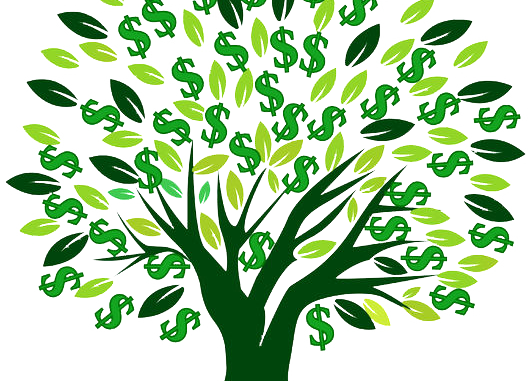
More often than not, capitalism and environmentalism do not appear in the same sentence. Unless the two are being contrasted, in which case, there is a lot to say about the differences between them. But what if the green associated with capitalism — money — leads to positive change in another green: nature? Now that is what I call symbiosis!
In recent years, to attract investors, Wall Street tycoons — with data scientists’ help — have created a new investment product: the Exchange Traded Fund (ETF). According to Investopedia, a leading source of financial education and insight, an ETF is a “type of security that involves a collection of securities – such as stocks – that often tracks an underlying index.”
The underlying “index” is a hypothetical portfolio of investment holdings representing a financial market segment. In this case, the hypothetical portfolio would include an array of environmentally conscious or “socially responsible” companies. The funds use environmental, social or governance criteria to pick investments and, in the process, exclude oil companies, coal producers and other industries that environmentally conscious investors detest.
USA Today reported that Morgan Stanley, a global investment bank, suggests that American millennials are twice as likely as any other investor to focus on socially responsible investments.
There are several technical reasons an investor may wish to invest in such an ETF.
First, an ETF reduces investment “risk.” In purchasing a hypothetical portfolio, an investor receives exposure to various companies, rather than just one. If one company performs poorly and loses money, the other companies can offset the loss through their gains. However, if an investor does not invest in an ETF and instead invests in just one company which performs poorly, there is no other company to offset its losses.
ETFs continue to grow more popular because they trade throughout the day like common stock, known in investment circles as “liquidity.” ETFs have what is known as “high liquidity,” that is, its large investor demand makes it an attractive product to investors — they can buy and sell the product quickly. Furthermore, if all goes accordingly, they can recognize a profit rather instantaneously.
This contrasts sharply with many individual stocks that have “low liquidity” or minimal investor demand. In this instance, if a particular stock performs poorly, an investor may have difficulty selling the stock. Therefore, an investor will recognize a significant loss on his or her investment.
By now, you understand the more technical aspects of ETFs and why they make sense from a financial standpoint. But what are the more ethical elements that make the investment an environmental one rather than a capitalistic one? After all, should environmentally conscious individuals spend their money elsewhere, perhaps donate to a more collective initiative? Wall Street tycoons don’t happen to have a track record that makes them an exemplar of humane behaviors. What ethical issues will a financial investment ease?
There are four main segments of the environmental investment pillar: Climate Change, Natural Resources, Pollution/Waste and Environmental Opportunities. When considering investments, these are the primary issues that millennial investors wish to combat. Climate Change investments address carbon emissions, product carbon footprint, financing environmental impact and climate change vulnerability; Natural Resources considers water stress, biodiversity, land use and raw material sourcing. Pollution/Waste tackles toxic emissions, packaging materials and electronic waste; and Environmental Opportunities include vital issues like green buildings, clean tech and renewable energy.
Although the investor’s intent may be ethical, Wall Street uses this good conscious advantageously (surprise, surprise!). As Investopedia notes, while it may be tempting to look at ETFs that focus specifically on one area of interest in the socially responsible investing world, investors must take caution with these funds. Thematic ETFs specific to one theme or strategy, such as ‘Climate Change,’ often come with much higher fees than traditional methods. Even though those strategies are similar to less nuanced ones, investors usually pay a premium. Wall Street contends that an approach like thematic ETFs requires more due diligence and investment savviness, and therefore a more significant time commitment. But that is false. They are no more analytic than traditional strategies.
Additionally, data scientists design these ETFs with software that reduces time and attention and leaves the work to an algorithm. Also worth mentioning: investors need to look at the underlying securities in a thematic ETF. An ETF “might be marketed as following a specific theme like ‘water stress,’ but investors need to look at the underlying stocks to determine if the companies have sufficient exposure to water projects.” They may not. In some ways, a company’s exposure, or its involvement in a given initiative, may be hyperbolized to attract less sophisticated investors.
So, consider whether or not capitalism and environmentalism can coexist. In my opinion, financial marketers lack the same social responsibility they did in the past. However, now — to increase their bottom-lines — they seek to exploit old enemies and make it appear as if they are new friends. Think about what investing in your future looks like, and whether or not an ETF should play a role in it.
